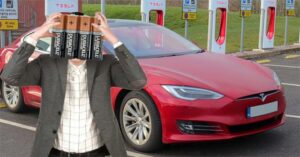
The grid system might face problems if overnight charging of hundreds of thousands of electric cars becomes widespread.
A recent study conducted by Stanford University reveals that the power grid in the western United States may become overloaded in the next ten years if there is a substantial surge in electric vehicle sales, particularly if the majority of these vehicles are charged at private residences. This surge in demand has the potential to increase electricity consumption during peak hours by 25%.

Charging electric cars can be time-consuming, as it typically takes anywhere from 2 to 22 hours to fully charge them. However, the fastest charging method, which takes the battery from 0-80%, can be done in just 20-30 minutes. As a result, about 80% of electric vehicle charging occurs at home and overnight, when the car is not being used.
Typically, the highest electricity demand occurs during the evening hours, particularly between 5-7 p.m., when individuals arrive home from work. Consequently, this is also the period when solar panels, which generate energy, start to deactivate.
A team of scientists from Stanford University examined data from residents in 11 western states to investigate the influence of their habits on the electric grid and the switch to renewable and other clean energy sources.
Ram Rajagopal, a professor at Stanford University, suggests that when electric cars reach a penetration rate of 30-40%, there will be significant implications for the power grid. Despite the fact that these vehicles are typically charged during off-peak hours, such as after 11pm, the reliance on conventional energy sources during this time could result in an upsurge in carbon emissions. This situation also demands increased electricity storage at individual households in order to address the strain on the grid.
To address this dilemma, car owners have the option of charging their vehicles during daytime hours at their workplace or public charging stations instead. By doing so, they can take advantage of the surplus solar energy generated by the grid in the late morning or early afternoon. This approach would alleviate the strain on electricity supply, eliminating the need for excessive backup resources. Consequently, it is crucial to prioritize the expansion of public and workplace charging infrastructure.
Gil Tal, director of an electric vehicle research center at the University of California, maintains that there is no longer a need for users to hesitate in transitioning to electric vehicles. He points out the increasing availability of clean energy sources and the capability to store energy within the conventional power grid.
According to Mr. Tal, there would be great advantages in switching to charging electric vehicles during the daytime. Therefore, it is essential to “install additional charging stations at locations where electric vehicles typically park for the duration of the day.”


